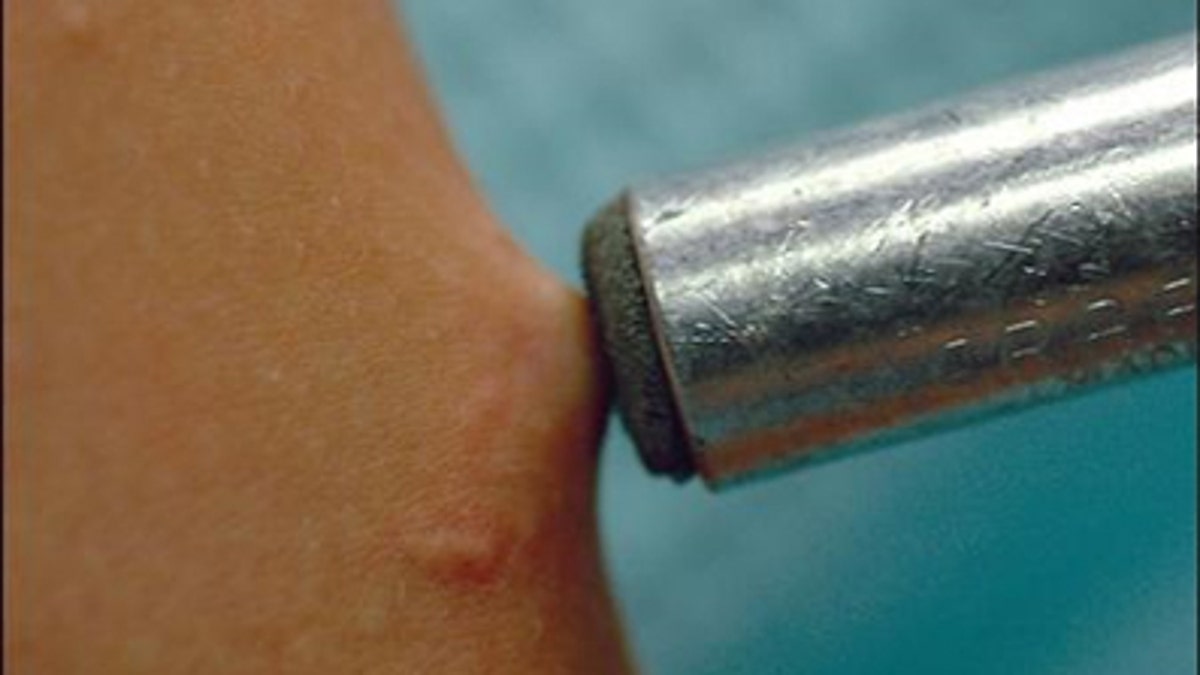
Got something stuck in your arm? If it's metal and hidden underneath the skin, doctors might be able to use an ordinary magnet to find it, according to a new case report.
"If you get a magnet, and you hold the magnet up to the skin—heck, that's as good as an x-ray," Dr. Robert Brodell, the report's co-author from the Northeast Ohio Medical University, in Rootstown, told Reuters Health.
The researchers note that it's important to remove objects that have punctured the body because they might cause infection. However, they wrote in Archives of Dermatology, sometimes identifying those objects can be difficult if they are stuck underneath the skin.
But at least in one patient, it was a simple magnet that came to the rescue.
The new case report involves a 15-year-old boy who showed up in Brodell's office with a black and blue mark on his arm, but no symptoms.
The boy had been hammering when he injured his arm, Brodell said—resulting in some bleeding, but the boy didn't know if anything had punctured the skin.
Brodell wasn't sure either, until he had the idea to hold a magnet next to the boy's bruise. That caused the skin to "tent" upward toward the magnet—meaning there was something magnetic under there. Once he knew that was the case, Brodell was able to easily make a small slit in the boy's arm and remove the piece of metal.
It's "not tremendously common" that people come into the doctor's office unsure of whether they've been punctured by a foreign object. And, "some of the things might be wood splinters or bamboo...that wouldn't be magnetic," meaning this handy test would show nothing, Brodell said.
But if a doctor keeps a magnet in the office, tries it out 50 times and it works once, that's still a success, he said.
Usually, an x-ray would be used to find a hidden piece of metal under the skin, Brodell explained. But while an x-ray might cost a couple hundred dollars, and expose the person to radiation, a magnet can be bought for just a few dollars and used over and over again.
A magnet might be especially handy when a patient with a possible puncture is headed for magnetic resonance imaging, or MRI, another type of body scan.
"If someone has this metal piece underneath (the skin) and happens to go and get an MRI, that uses a big magnet, it's conceivable that could rip the thing out of your skin," Brodell said.
The Food and Drug Administration has approved multiple rare earth magnets to be used to remove foreign metal bodies from the eye, but has no common magnets in its list of approved devices.
Brodell has consulted or spoken on behalf of a number of drug companies, and for 3M - which makes magnets. His work for the company was unrelated to magnets, however, and he said that "the 50 cent magnet at the five and dime store would be fine."
He's not worried about any side effects that could come from using a small, everyday magnet.
"I'm not using a magnet in something that's in the heart or the brain...it's hard to imagine something bad happening," he said.
His message for doctors is this: "If you have a magnet handy in the office, you can whip that out anytime you're wondering about the presence of a metallic foreign body."
